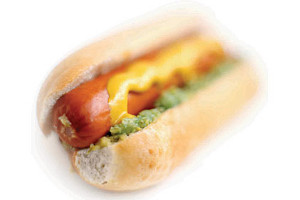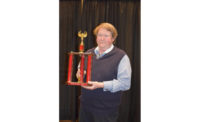 A somewhat unusual aspect to "cured" natural and organic processed meats is that nitrate and nitrite cannot be added as ingredients, because "preservatives" are not permitted in natural and organic foods. This has resulted in alternative meat-curing processes that utilize natural sources of nitrate, typically celery juice concentrate or powder.
A somewhat unusual aspect to "cured" natural and organic processed meats is that nitrate and nitrite cannot be added as ingredients, because "preservatives" are not permitted in natural and organic foods. This has resulted in alternative meat-curing processes that utilize natural sources of nitrate, typically celery juice concentrate or powder.
Because the alternative curing process typically results in less ingoing nitrite in these products, and the exclusion of other preservatives from natural and organic processed meats, there has been concern that these products could result in increased pathogen and spoilage bacterial growth.
Scientists at Iowa State University have been studying how these products differ from conventionally cured meats and how these differences may impact pathogen growth potential. The studies have included a survey of commercially available naturally cured and traditionally cured frankfurters (10 naturally cured products, 2 traditionally cured products), hams (7 naturally cured, 4 traditional) and bacon (9 naturally cured, 1 traditional) to assess the physical and chemical properties of these products that could be related to potential for growth of bacterial pathogens.
All commercial products were obtained from retail stores and analyzed for pH, water activity, residual nitrite, residual nitrate, salt content, percent cured pigment, color intensity and proximate (moisture, fat, protein) composition. Because each of the specific products evaluated was also tested for potential bacterial growth by inoculation with Clostridium perfringens (at 20øC) and Listeria monocytogenes (at 10øC), correlation coefficients were calculated for the measured physical and chemical properties and pathogen growth.
In frankfurters, product pH was most closely correlated to C. perfringens growth. Other significantly correlated factors included greater moisture content, greater water activity, reduced salt content, lower percent cured pigment and less redness. Although the pigment and color results for naturally cured products suggest less curing reactions, the residual nitrite and residual nitrate did not differ from traditionally cured frankfurters.
For hams, there were fewer correlations with C. perfringens growth than for frankfurters but, in this case, reduced residual nitrite and residual nitrate were significantly correlated to C. perfringens growth as well as increased water activity, reduced salt content and reduced percent cured pigment. For bacon, the results included positive correlations for increased water activity and decreased salt content.
For L. monocytogenes, water activity and protein content was found to be a significant factor, but other properties were not significantly correlated with pathogen growth.
The results of this survey suggest that leaner composition, greater available water, reduced salt content and lesser curing reactions as observed for naturally cured products may contribute to the observed greater potential for pathogen growth in these products, particularly frankfurters. Consequently, additional antimicrobial measures for naturally cured processed meats should be pursued to maintain safety of these products.
Joseph G. Sebranek, Ph.D., is a university professor and Charles F. Curtiss Distinguished Professor in Agriculture and Life Sciences at Iowa State University. Contact him at sebranek@iastate.edu; Gary Sullivan, Ph.D., is an assistant professor, Meat Processing, at the University of Nebraska-Lincoln. Contact him at gsullivan3@unl.edu.
Contact AMSA
For more information about AMSA and its programs:
E-mail:
information@meatscience.org
Mail:
American Meat
Science Association
P.O. Box 2187
Champaign, IL 61825-2187
Phone:
(800) 517-AMSA
(8 a.m. - 5 p.m. Central)
Web:
www.meatscience.org



Report Abusive Comment